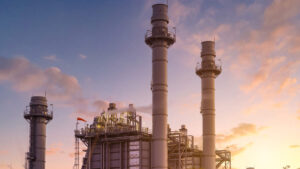GOT GAS: LNG spot prices are down but exporters have little to fear

Picture: Getty Images
Australian LNG exporters looking for a repeat of last year’s bumper conditions will be sorely disappointed with prices failing to respond as they did in 2022 despite the disruption of gas pipeline supplies in Europe by multiple maintenance works.
Rystad Energy noted that the high storage levels and a relative lack of demand during the summer injection season was keeping the Asia Spot price around $9.26 per million British Themal units (MMBtu) while the European TTF price hovered around $8.43/MMBtu.
The independent energy research and business consultancy notes that storage levels in Europe were around 789 Terawatt-hours (TWh) and 70.13% full as of June 6, compared to 550 TWh and 49.96% full one year ago.
It added that the previous mild winter and already high storage levels meant that the European Union looks set to reach its 90% storage inventory target by November 1, 2023.
Likewise, high inventory levels have for most part kept Northeast Asian utilities out of the spot market in recent months.
That is not to say the industry won’t be profitable.
Concerns about energy security are still very much present and high storage levels can only provide some insulation from pricing pressures in the event that the next winter in the northern hemisphere is not as mild as the one that has just passed.
What this means is simple – while LNG players can hardly expect to make the frankly ridiculous sums they were enjoying last year, they will still be making good money.
Highlighting this, EnergyQuest noted that LNG export revenues fell from $27.6bn in the fourth quarter of 2022 to $22.6bn in the first quarter of 2023, though this is still up from the $17.8bn recorded in the previous corresponding quarter.
Domestic gas feeling the pinch?
While gas exports continue to hold their strength, the Australian Government’s decision to impose a $12 per gigajoule gas cap appears to have impacted on the domestic gas market.
EnergyQuest noted that conventional gas production to meet domestic demand in the first quarter was at its lowest level in 17 years with falls in every region. However, this was due to ENI’s Blacktip field experiencing a very steep decline, and production from the ageing fields operated by the Gippsland Basin Joint Venture fell to its lowest level since the first quarter of 2020.
However, the cap does appear to have done what it set out to do.
Short-term gas prices on the East Coast averaged $12/GJ in the first quarter of 2023. Although that’s a 20.9% increase from the same period the previous year, it is down 32.5% from the fourth quarter 2022 average of $17.78/GJ.
As for whether the cap will truly impact on new domestic gas developments, the jury is still out given that there are still junior companies working to bring new sources of gas into the mix.
Related Topics

UNLOCK INSIGHTS
Discover the untold stories of emerging ASX stocks.
Daily news and expert analysis, it's free to subscribe.
By proceeding, you confirm you understand that we handle personal information in accordance with our Privacy Policy.








